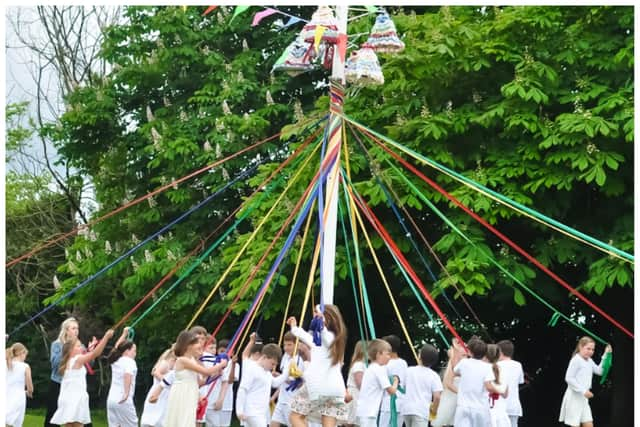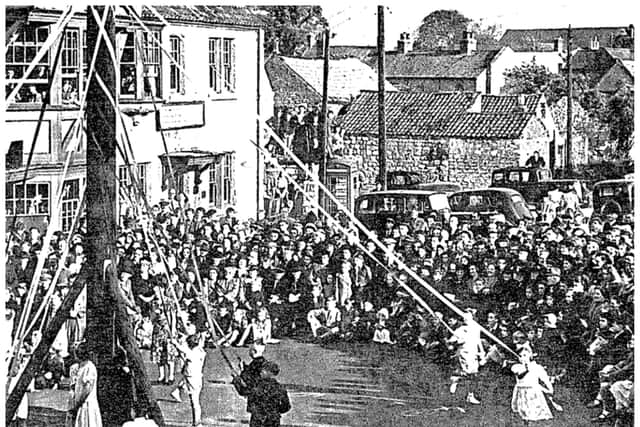Doncaster school pupils to mark 100 years of village maypole celebrations
and live on Freeview channel 276
Wadworth has been the venue for the annual spring tradition for decades – and staff and children at Wadworth Primary School will be celebrating 100 years of the event on May 24.
The tradition is thought to stretch back even further, but the school only has records stretching back to 1923, hence celebrating the 100th anniversary with this year’s celebration.
Advertisement
Hide AdAdvertisement
Hide AdLouise Wollerton of the school said: "The event is held annually at the school and involves Maypole dancing by the whole school, crowning of a May Queen, a procession of all the children around the village as well as a bake sale, raffle and stall selling items from local small businesses.


“This year marks 100 years of the celebrations which we believe is worth recording.
"This is a superb school event which everyone takes pride in being part of.”
The event is open to all. Full details HERE
What is a maypole?


A maypole is a tall wooden pole erected as a part of various European folk festivals, around which a maypole dance often takes place.
Advertisement
Hide AdAdvertisement
Hide AdThe festivals may occur on 1 May or Pentecost (Whitsun), although in some countries it is instead erected at Midsummer (20–26 June).
Primarily found within the nations of Germanic Europe and the neighboring areas which they have influenced, its origins remain unknown.
It has often been speculated that the maypole originally had some importance in the Germanic paganism of Iron Age and early Medieval cultures and that the tradition survived Christianisation, albeit losing any original meaning that it had.
English historian Ronald Hutton concurs with Swedish scholar Carl Wilhelm von Sydow who stated that maypoles were erected "simply" as "signs that the happy season of warmth and comfort had returned."
Advertisement
Hide AdAdvertisement
Hide AdTheir shape allowed for garlands to be hung from them and were first seen, at least in the British Isles, between AD 1350 and 1400 within the context of medieval Christian European culture.
The practice became increasingly popular throughout the ensuing centuries, with the maypoles becoming "communal symbols" that brought the local community together – in some cases, poorer parishes would join up with neighboring ones in order to obtain and erect one, whilst in other cases, such as in Hertfordshire in 1602 and Warwickshire in 1639, people stole the poles of neighboring communities, leading to violence.
Under the reign of Edward VI in England and Wales, Protestant Anglicanism was declared to be the state religion, and under the Reformation many maypoles, such as the famous Cornhill maypole of London, were destroyed; however when Mary I ascended the throne after Edward's death, she reinstated Roman Catholicism as the state faith, and the practice of maypoles was reinstated.
Under later English monarchs, the practice was sporadic, being banned in certain areas, such as Doncaster, Canterbury, and Bristol, but continuing in many others, according to the wishes of the local governors.
What is a maypole dance?
Advertisement
Hide AdAdvertisement
Hide AdThe dance is performed by pairs of boys and girls (or men and women) who stand alternately around the base of the pole, each holding the end of a ribbon. They weave in and around each other, boys going one way and girls going the other and the ribbons are woven together around the pole until they meet at the base.
What is a May Queen?
In the British Isles and parts of the Commonwealth, the May Queen or Queen of May is a personification of the May Day holiday, and of springtime and also summer.
The May Queen is a girl who rides or walks at the front of a parade for May Day celebrations. She wears a white gown to symbolise purity and usually a tiara or crown. Her duty is to begin the May Day celebrations. She is generally crowned by flowers and makes a speech before the dancing begins.